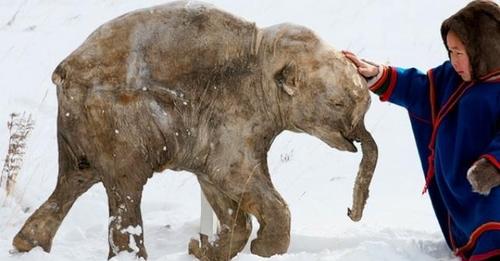39000 Years Old Frozen Woolly Mammoth found in Siberia, goes on display in Tokyo
After 39,000 years, a baby wooly mammoth is making her public debut. The prehistoric creature, nicknamed Yuka, is being put on public display in Japan, after being shipped from her home in Siberia, Russia.

Yuka was found trapped in ice on the New Siberian Islands. Though parts of her body were exposed to the elements and predators, the young animal is thought to be the most well-preserved mammoth specimen known to science.
She has been carefully shipped in a large crate packed with dry ice to an exhibition hall in Yokohama, south of Tokyo.

Visitors can stroll past the creature and see its orange-brown tufted hair and soft tissue, and imagine it wandering the icy planes thousands of years ago.
Yuka was first believed to be 10,000 years old, but subsequent tests showed the two-year-old mammoth was much older, dating to about 39,000 years, according to the Siberian Times.

Scientists were able to extract blood for testing, the first time the extinct creature’s blood has been harvested by scientists.
According to a May report by the Times, Russian and South Korean scientists are working on extracting the mammoth’s DNA to bring the species back to life.
Visitors to the Japanese museum can see Yuka on display with her trunk fully extended and her legs sprawled.

She is also covered in a layer of permafrost.
The majority of woolly mammoths died out some 10,000 years ago, though a small group of mammoths lived on Wrangel Island in the Arctic until around 1700 B.C.
Mammoth expert Norihisa Inuzuka ssays aid that Yuka allows scientists to “dig deeper into the reasons why species became extinct and apply the lessons learned to the human race, which might be facing its own dangers of extinction.”
